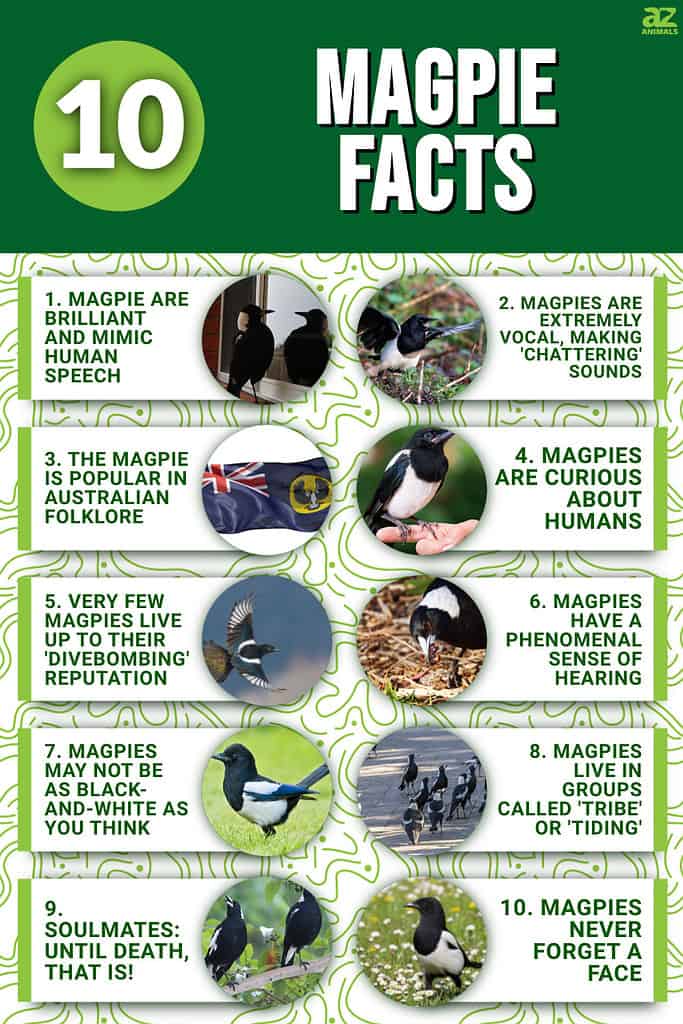
Magpies are one of the world’s most fascinating and well-known bird species, which is just the start of incredible magpie facts. But everyone seems to have their thoughts about these intelligent creatures, whether they think they’re charming or pesky. Magpies are one of the most prevalent birds in Australia. You can see them in parks, gardens, and open areas throughout the country. Despite their abundance, there are many things that people don’t know about magpies. So, here are ten incredible magpie facts to kickstart the discussion.
1. Magpie Are Brilliant and Mimic Human Speech
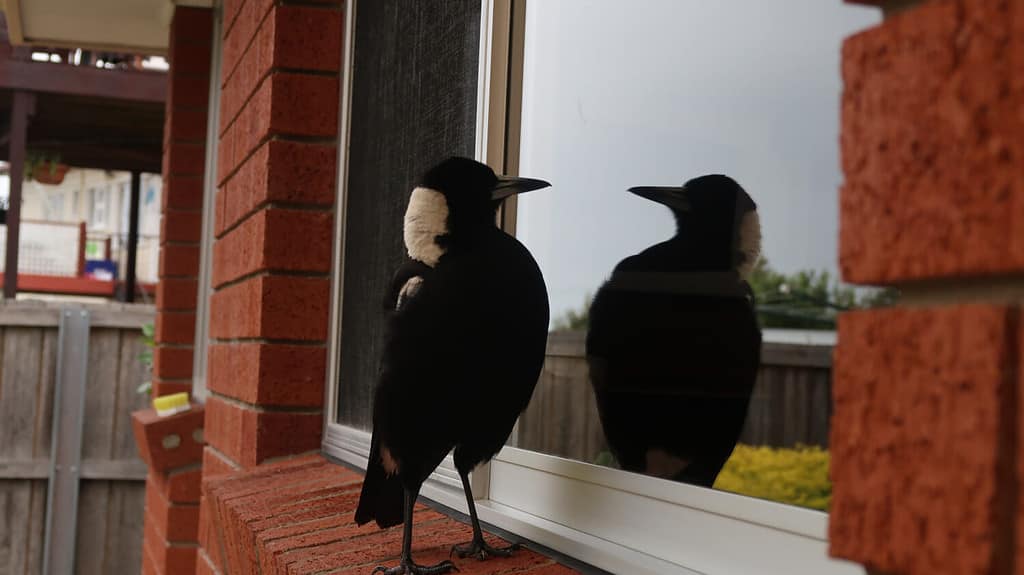
Magpies recognize themselves in mirrors (unlike other birds), recognize people’s faces, and remember them after years of absence.
©thekelbehindthelens/Shutterstock.com
Magpies are part of a group of bird species of the corvid order, including crows and ravens. The Corvid family is well known for their intelligence, and the magpie is no exception. One thing that sets the magpie apart is its ability to mimic human speech. This skill is so indisputable that some believe magpies can hold conversations. While there are no scientific studies to support this claim, it is an undeniable magpie fact that these birds are capable of complex vocalizations.
2. Magpies Are Extremely Vocal, Making ‘Chattering’ Sounds
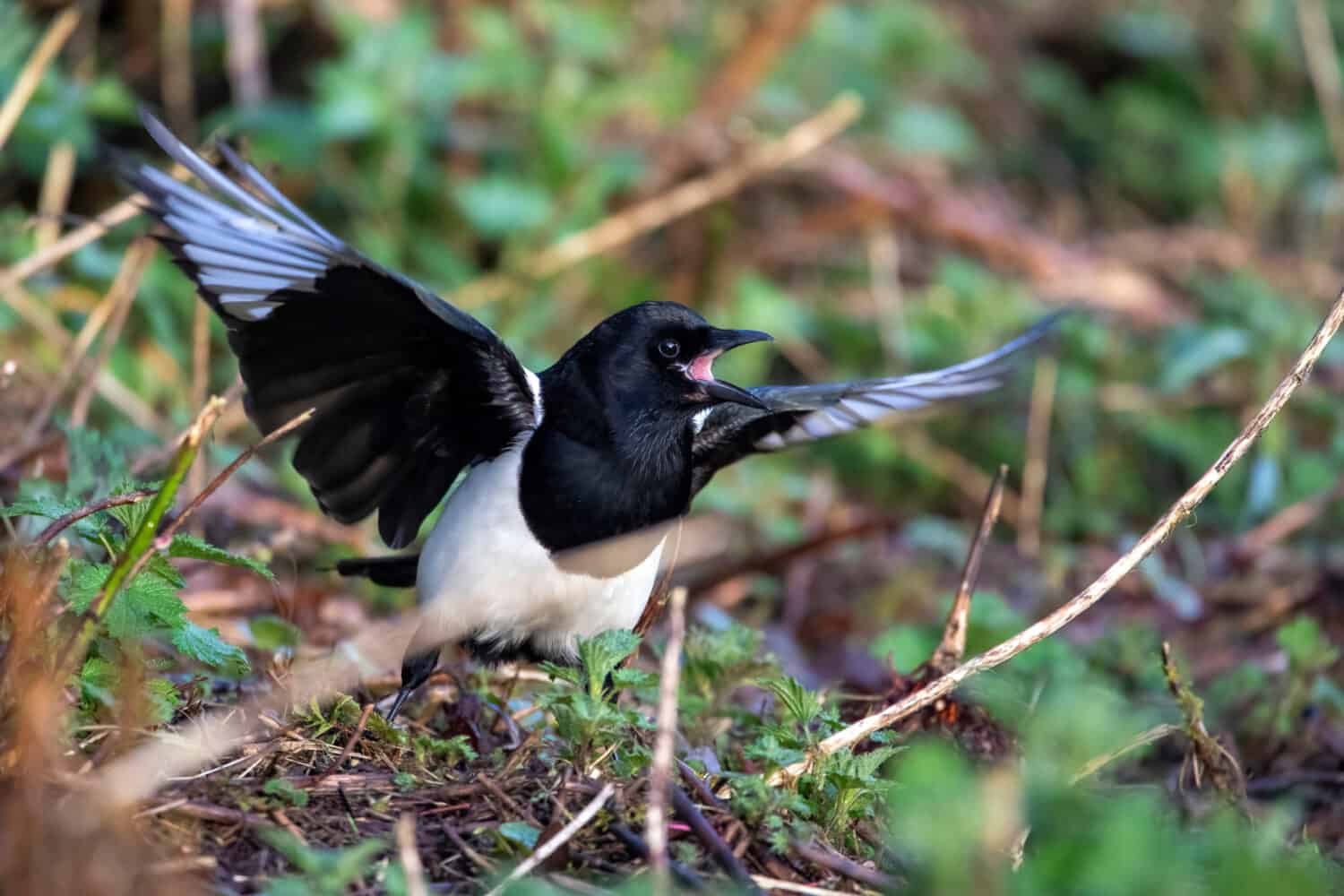
Magpies are loud when they call for their mates.
Image: Anthony King Nature, Shutterstock
©Anthony King Nature/Shutterstock.com
Another amazing magpie fact is that this bird is known for its loud, chattering calls. These calls can be heard at any time but are most common in the early morning and evening. Magpies use a variety of calls to communicate with each other, including alarm calls, contact calls, and courtship calls. The alarm call is a sharp, repetitive sound that warns other magpies of danger. The contact call is a softer, more mellow sound that the magpie uses to keep in touch with other flock members. The courtship call is a complex series of sounds that male magpies use to attract mates. Magpies also imitate the sounds of other birds and animals.
3. The Magpie Is Popular in Australian Folklore

Magpies are important in Australian culture.
Image: xshot, Shutterstock
©xshot/Shutterstock.com
In Australia, the magpie symbolizes good luck, and the story is that if a magpie builds a nest in your house, you will have good fortune. In addition to being associated with good luck, the magpie symbolizes that spring is on its way. This symbolism stems from the fact that magpies typically lay their eggs in Australia in September, the beginning of spring. As a result, the magpie is a popular subject in Australian folklore and culture.
4. Magpies Are Curious About Humans
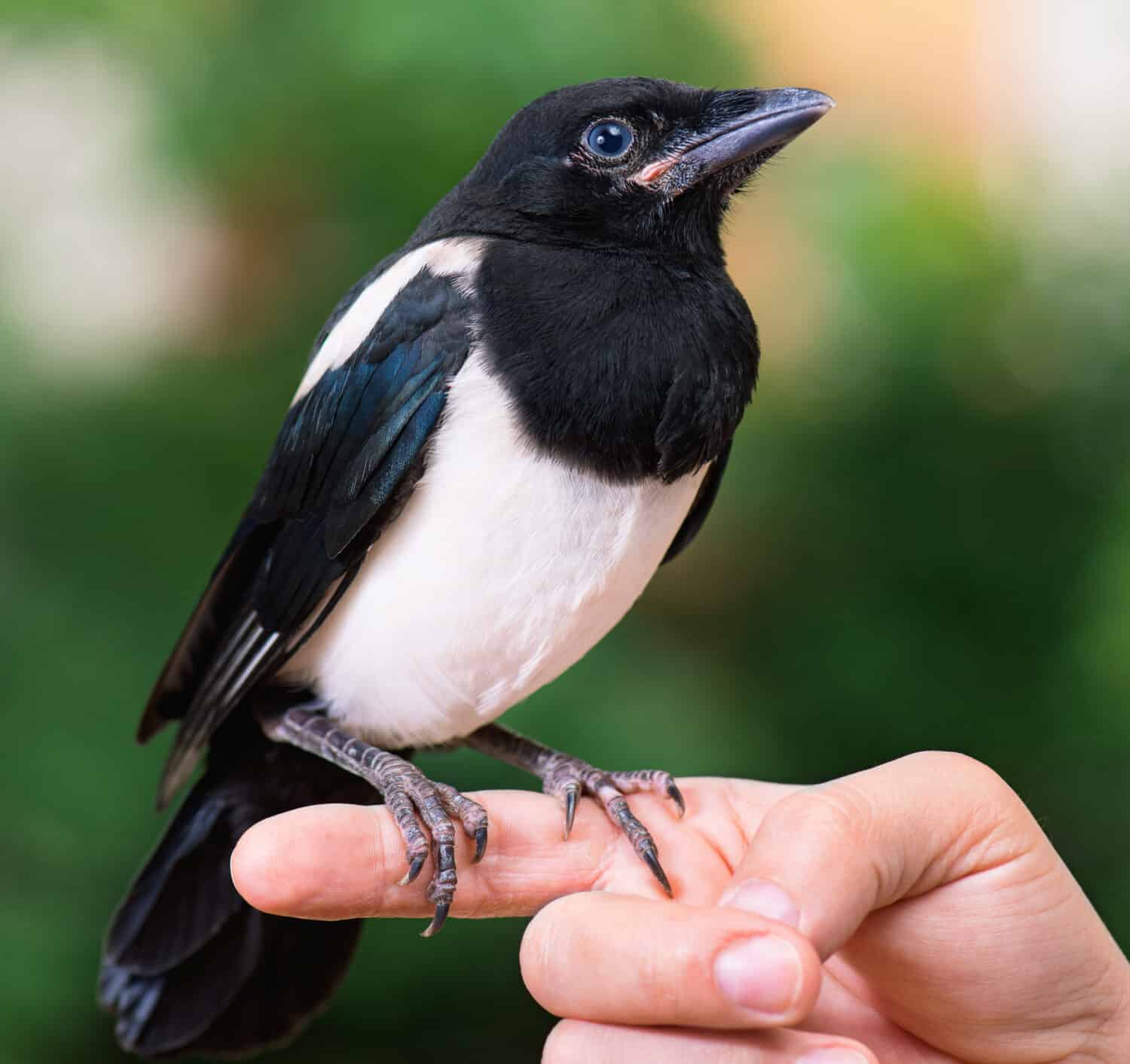
Magpies charm people with their curiosity.
Image: DenisNata, Shutterstock
©DenisNata/Shutterstock.com
Magpies are curious creatures and often enjoy making friends with people. It’s not uncommon for magpies to approach people in hopes of getting to know them better. While their curiosity can sometimes make them get up close and personal with people, this behavior is generally harmless and charming. A Magpie’s intelligence most likely contributes to their curiosity about getting to know people. So, if you ever have a magpie approach you, don’t be afraid -they’re just looking to make a new friend.
5. Very Few Magpies Live Up to Their ‘DiveBombing’ Reputation
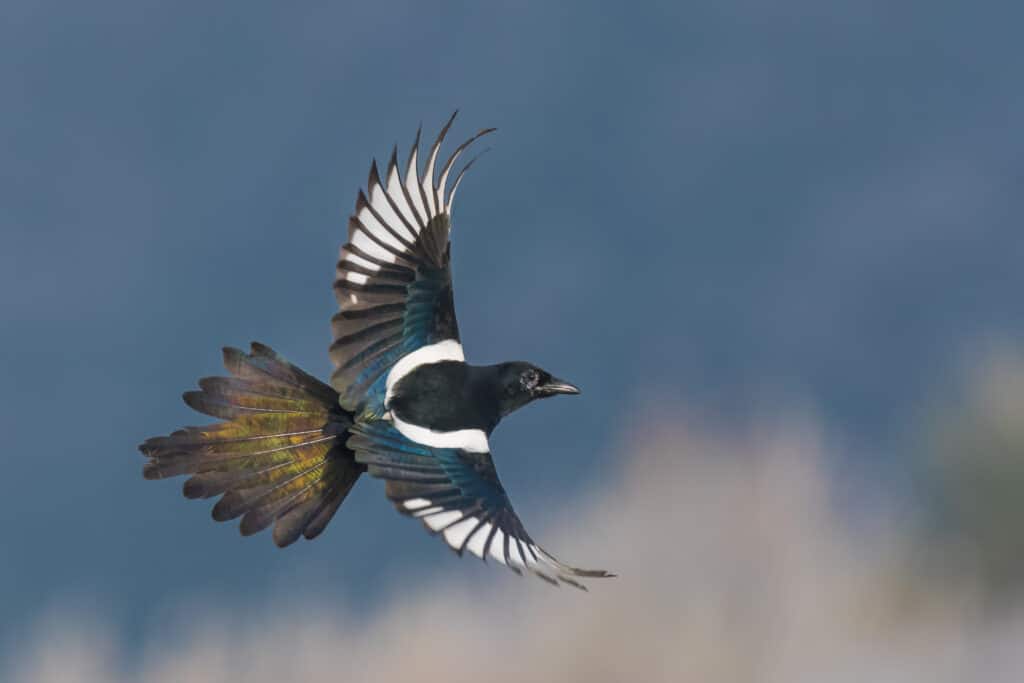
Although magpies have a reputation for being aggressive birds, the truth is that they generally only attack people if they feel threatened.
©Rafal Szozda/Shutterstock.com
One of the most common myths about magpies is that they dive-bomb people. However, very few magpies engage in this behavior. Although magpies have a reputation for being aggressive birds, the truth is that they generally only attack people if they feel threatened. In most cases, magpies try to scare away potential threats by swooping down and making loud noises. If you’re ever the recipient of a bird dive-bombing you, the chances are pretty good it’s not a magpie, and that’s a fact.
6. Magpies Have a Phenomenal Sense of Hearing
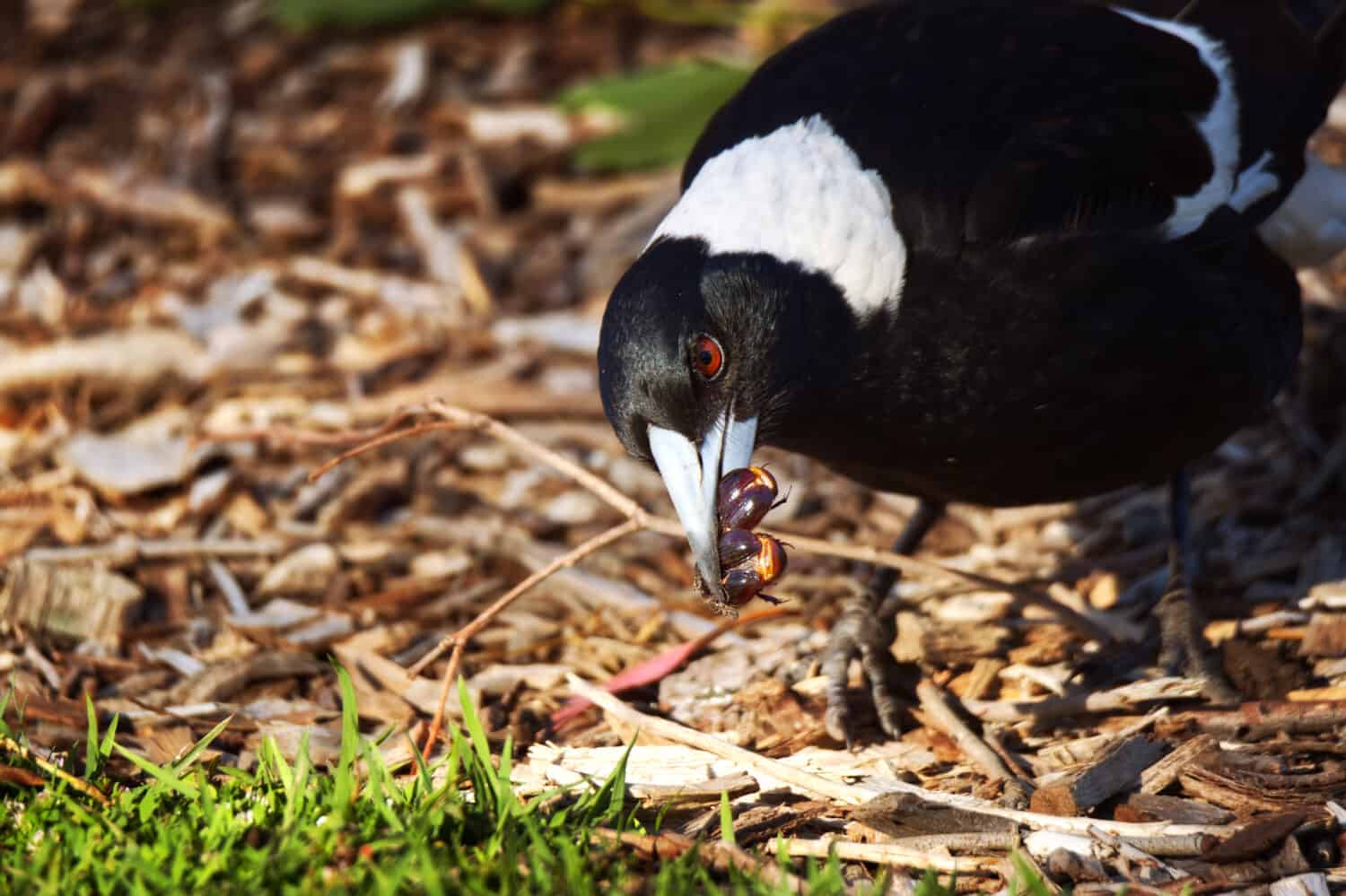
Magpies can hear worms and grubs under the ground.
Image: Glanzpunkt, Shutterstock
©Glanzpunkt/Shutterstock.com
Magpies have a phenomenal sense of hearing. They can detect the sound of grubs and worms under the ground, allowing them to zero in on their next meal. This keen sense of hearing also comes in handy for avoiding predators. Magpies will typically eavesdrop on the calls of other birds, using the information to determine whether or not there is danger nearby. In addition to their acute sense of hearing, another magpie fact is that they have excellent eyesight. With such sharp senses, it’s no wonder that magpies are among the most successful birds in the world.
7. Magpies May Not Be as Black-And-White as You Think
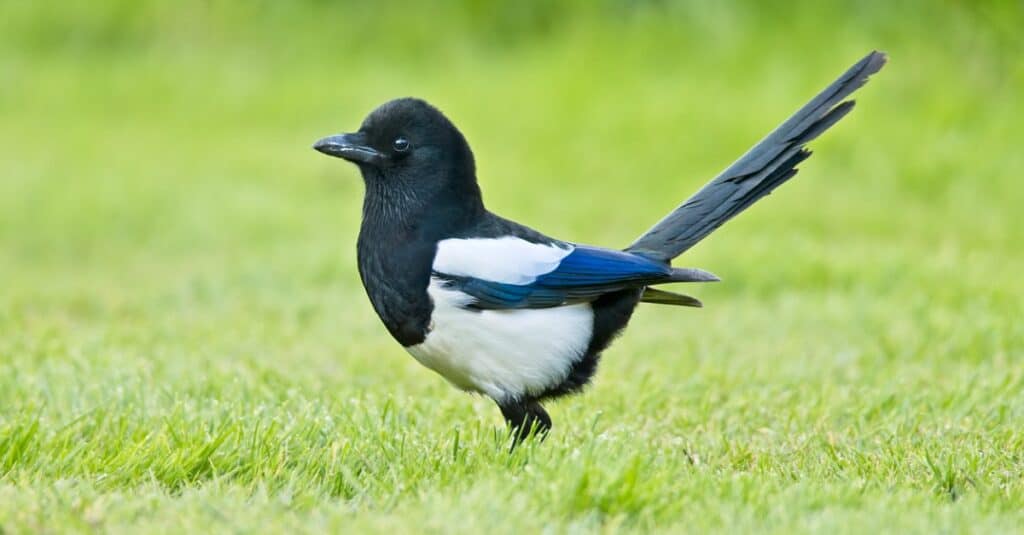
There are nine Magpie subspecies in Australia, which can vary quite a bit in appearance.
©iStock.com/birdsonline
Magpies are fascinating creatures, and their appearance is just one aspect that makes them stand out. While most people are familiar with the black-and-white variety, did you know that there are nine different subspecies of magpie found in Australia? These subspecies can vary quite a bit in appearance, with some adults having almost entirely white feathers on their backs. In contrast, others may be black or a hybrid of the two.
8. Magpies Live in Groups Called ‘Tribe’ Or ‘Tiding’

Magpies are highly social and live in groups of up to 50 birds.
Image: Ken Griffiths, Shutterstock
©Ken Griffiths/Shutterstock.com
Magpies are fascinating birds, not just because of their distinctive black-and-white plumage. Did you know, for instance, that the collective noun for a group of Magpies is not a flock but rather a ‘tribe’ or a ‘tiding?’ This collective noun is because Magpies are very social creatures. They live in groups of up to 50 individuals and work together to build nests and care for their young.
9. Soulmates: Until Death, That Is!
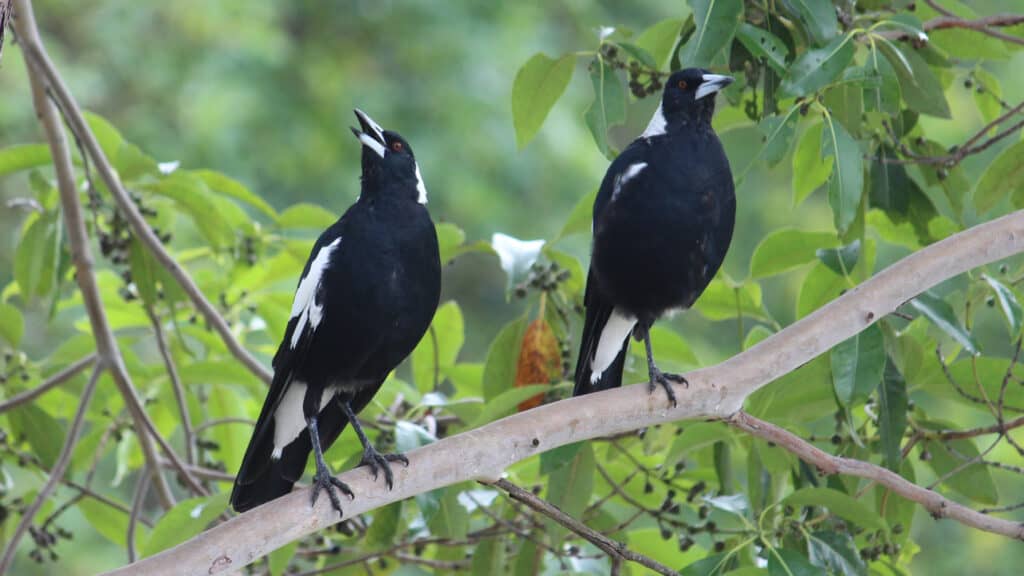
It is not uncommon for a magpie couple to stay together for life.
©Rose Makin/Shutterstock.com
It’s a sad but well-known fact that not all relationships last forever. Death can tear us apart even when we pledge our hearts to each other. But did you know that this isn’t just true for humans? Animals can be just as loyal to their mates – until death do them part. Take, for example, the magpie. These creatures are renowned for their strong pair bonds, and it’s not uncommon for a magpie couple to stay together for life. If a male magpie dies while the young are still in the nest, the female will take a new partner. This unknown male will help to protect the young, even though he’s not genetically related to them – another beautiful magpie fact.
10. Magpies Never Forget a Face
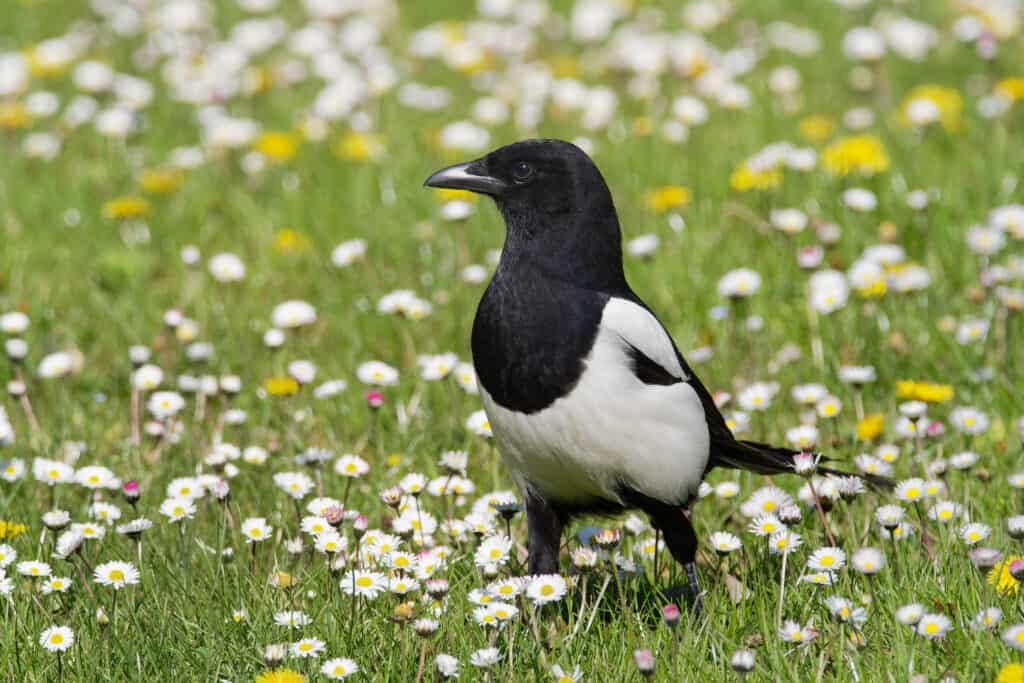
Researchers found that magpies can distinguish between individual human faces and remember faces from up to four years earlier.
©Michal Pesata/Shutterstock.com
Magpies are clever birds, and one of the things they are smartest at is remembering human faces. In recent studies, researchers found that magpies can distinguish between individual human faces and remember faces from up to four years earlier. The study shows that magpies use the shape and color of a face to remember it, which suggests that they have advanced visual processing abilities. So next time you see a magpie, give it a big smile—it just might remember you.
The photo featured at the top of this post is © Rose Makin/Shutterstock.com
Sources
- ScienceDirect, Available here: https://www.sciencedirect.com/science/article/abs/pii/0003347279900241
- JSTOR, Available here: https://www.jstor.org/stable/4534660
- Springer Nature Switzerland AG, Available here: https://link.springer.com/article/10.1007/BF01647274
- Books on Google Play, Available here: https://books.google.co.za/books?hl=en&lr=&id=OzgLUUrAnk0C&oi=fnd&pg=PR7&dq=Magpie+bird+facts&ots=PJv49BWtvm&sig=opwCbY-gR5B4gqWpRgPRRZkCGKI&redir_esc=y#v=onepage&q=Magpie%20bird%20facts&f=false
- Informa UK Limited, Available here: https://www.tandfonline.com/doi/abs/10.1071/MU948291?journalCode=temu20
- American Physical Society, Available here: https://journals.aps.org/pre/abstract/10.1103/PhysRevE.73.021914
- JSTOR, Available here: https://www.jstor.org/stable/3566065
- PLOS, Available here: https://journals.plos.org/plosone/article?id=10.1371/journal.pone.0086193
- Informa UK Limited, Available here: https://www.tandfonline.com/doi/abs/10.1071/MU928165?journalCode=temu20
Thank you for reading! Have some feedback for us? Contact the AZ Animals editorial team.






